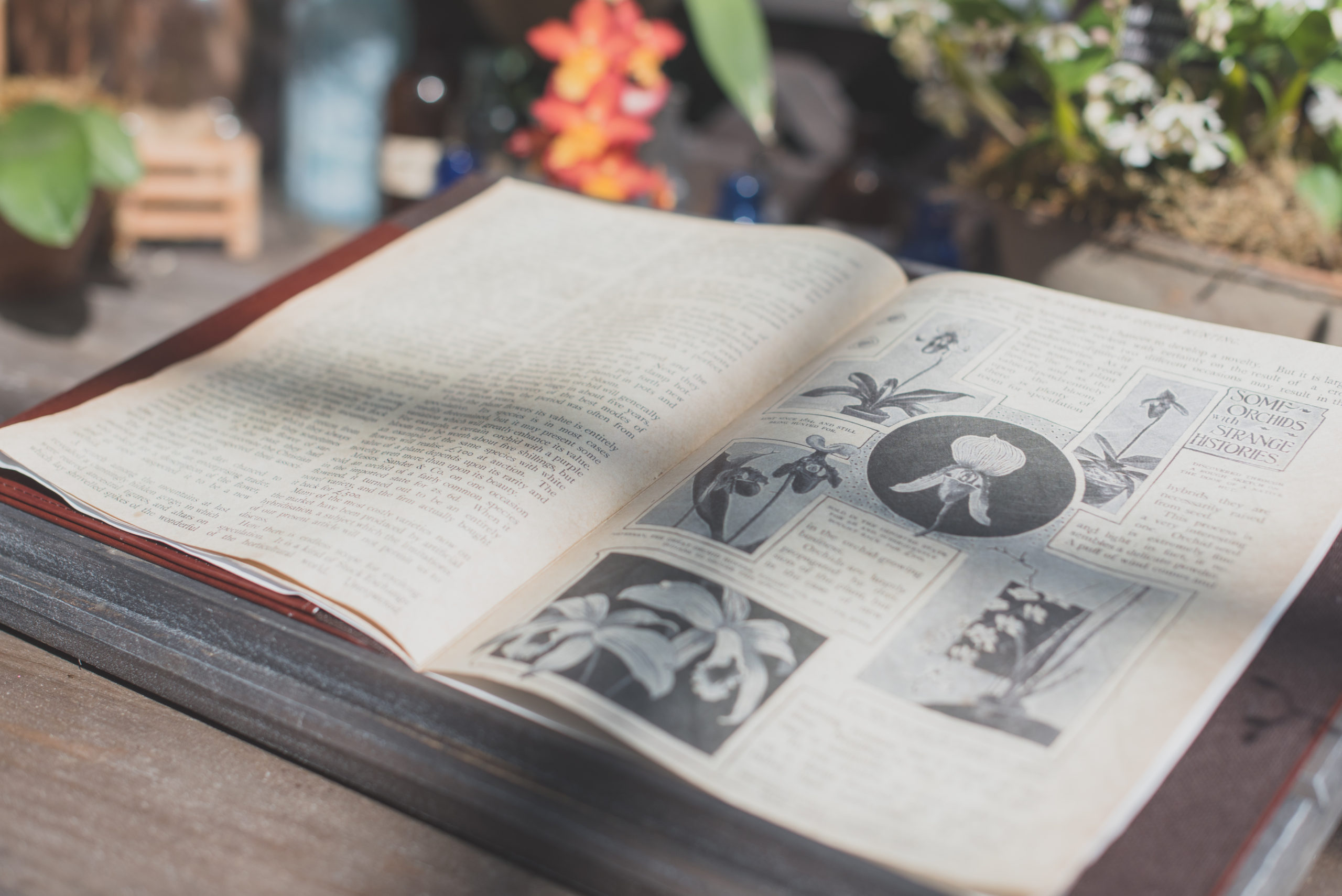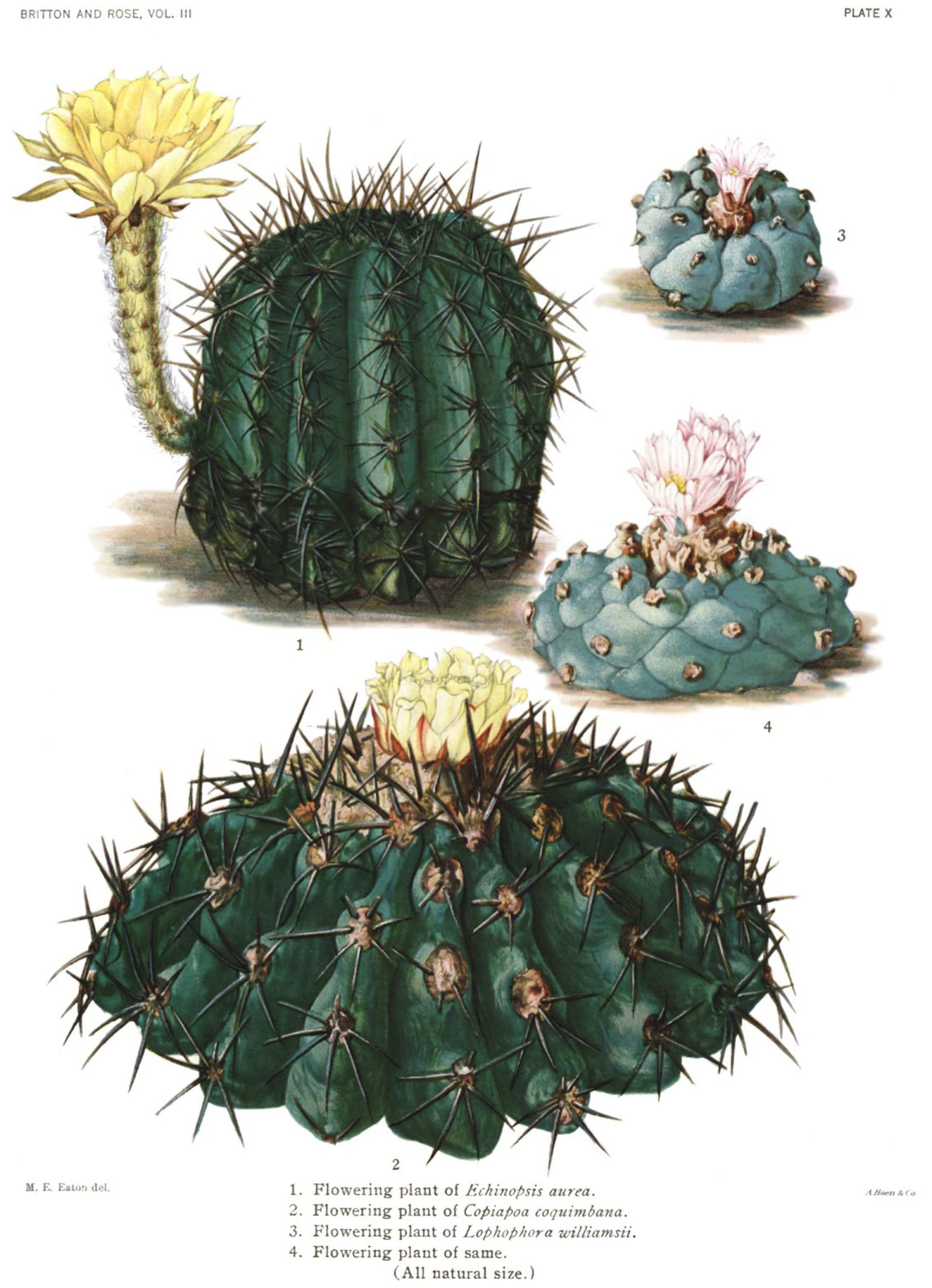Here you can find interesting publications (with PDFs available) and other informative resources, arranged in alphabetical order.
Online Library

Interesting and hard-to-find articles
Albesiano, Sofía, and Roberto Kiesling. “Identity and neotypification of Cereus macrogonus, the type species of the genus Trichocereus (Cactaceae).” Haseltonia 2012, no. 17 (2012): 24-34.
Albesiano, Sofía, and Teresa Terrazas. “Cladistic analysis of Trichocereus (Cactaceae: Cactoideae: Trichocereeae) based on morphological data and chloroplast DNA sequences.” Haseltonia 2012, no. 17 (2012): 3-23.
Berresford, Peter, and David Quail. “The Black Lace Cactus–an evaluation.” CactusWorld 29, no. 4 (2011): 185-194.
- We gratefully acknowledge permission granted by the Editor of Cactus World and by the author, for us to reproduce the above article for our readers.
Coulter, John Merle. Preliminary revision of the North American species of Cactus, Anhalonium, and Lophophora. Vol. 3, no. 2. US Government Printing Office, 1894.
- pp. 131-132: new genus Lophophora is proposed, and L. williamsii and L. williamsii lewinii are described
Cruz Sánchez, Guillermo (1948). “Estudio farmacologico de la Opuntia cylindrica”. PhD dissertation. Instituto de Farmacología y Terapeutica Universidad Nacional Mayor de San Marcos.
- Opuntia cylindrica in the above article is actually referring to Trichocereus pachanoi
Cruz Sánchez, Guillermo. “Informe sobre las aplicaciones populares de la cimora en el norte del Perú.” Revista de Farmacologia y Medicina Experimental Lima 1 (1948): 253-258.
Cruz Sánchez, Guillermo. “Estudio folklórico de algunas plantas medicamentosas y tóxicas de la región norte del Perú.” Revista Peruana de Medicina Experimental y Salud Pública 8, no. 1-4 (1951): 159-166.
Feeney, Kevin. “The legal bases for religious peyote use.” Psychedelic medicine: New evidence for hallucinogenic substances as treatments 1 (2007): 233-250.
Feeney, Kevin. “Peyote as commodity: An examination of market actors and access mechanisms.” Human Organization 76, no. 1 (2017): 59-72.
Förster, Carl Friedrich (1846). Handbuch der Cacteenkunde in ihrem ganzen Umfange. Leipzig: Verlag von Im. Tr. Wöller.
- Echinocactus Williamsii is described on page 285 with an addendum on page 519.
Förster, Carl Friedrich & Rümpler, Theodor (1886). Handbuch der Cacteenkunde in ihrem ganzen Umfange (2nd edition). Leipzig: Verlag von Im. Tr. Wöller.
- Anhalonium Williamsii is described on page 233 and 235.
Friedrich & Rowley 1974 – Our thanks to David Hunt and the IOS for granting us permission to post this!
Friedrich, Heimo, and P. ROWL. “Zur taxonomie und phylogenie der Echinopsidinae (Trichocereinae).” IOS Bulletin 3, no. 3 (1974): 79-92.
Rowley, G. D. “Reunion of the genus Echinopsis.” IOS Bulletin 3, no. 3 (1974): 93-99.
Vlastimil Habermann’s two Lophophoras
Gonzáles Huerta, Ines. “Indentificacion [sic] de la mescalina contenida el Trichocereus Pachanoi (San Pedro)”. Revista del Viernes Medico, (1960), 11 (1): 133–137.
Gutiérrez-Noriega, Carlos. “Area de mescalinismo en el Perú.” América Indígena 10, no. 3 (1950): 215-220.
Gutiérrez-Noriega, Carlos & Cruz Sánchez, Guillermo. “Alteraciones mentales producidas por la Opuntia Cylindrica”. Revista de Neuropsiquiatría, (1947), 10 (4): 422–468.
Gutiérrez-Noriega, Carlos & Cruz Sánchez, Guillermo. “Efecto de la intoxicacion producida por la Opuntia Cylindrica Sobre los Resultos del Test de Rorschach”. Revista de Neuro-Psiquiatría, (1948), 11 (3): 390–401.
Gutiérrez-Noriega, Carlos & Cruz Sánchez, Guillermo. “Psicosis experimental producida por la Opuntia Cylindrica”. Revista de Neurología, (1948), 11 (2): 155–170.
Lange, Michael J., and Jim Sinclair. “A hard-to-manage taxon: The Black Lace Cactus Echinocereus fitchii ssp. albertii.” Cactus and Succulent Journal 85, no. 2 (2013): 72-78.
- We gratefully acknowledge permission granted by the Editor of the Cactus and Succulent Journal (U.S.), the Cactus and Succulent Society of America, and the author, for us to reproduce the above article for our readers.
Marini-Bettòlo, G. B. & Coch Frugoni, Juan A. “Influenza del pH nella separazione electtroforetica su carta degli alcaloidi”. Gazzeta Chimica Italiana, (1956), 86: 1324–1331.
Marini-Bettòlo, G. B. & Coch Frugoni, Juan A. “Influenza del pH nella separazione electtroforetica su carta degli alcaloidi”. Rendiconti. Instituto Superiore di Sanità, (1958), 21: 319–327. [see also in CA 49, 1280e]
Ogunbodede, Olabode, Douglas McCombs, Keeper Trout, Paul Daley, and Martin Terry. “New mescaline concentrations from 14 taxa/cultivars of Echinopsis spp.(Cactaceae)(“San Pedro”) and their relevance to shamanic practice.” Journal of ethnopharmacology 131, no. 2 (2010): 356-362.
Šnicer, Jaroslav, Bohata, Jaroslav and Myšák, Vojtěch. “The Littlest Lophophora.” Cactus and Succulent Journal 81, no. 6 (2009): 294-300.
Szuman, Stefan. “Analiza formalina i psycholgiczna widzeń meskalinowych”. Kwartalnik Psychologiczny, (1930),1-2: 157–212.
Recommended books
Britton, Nathaniel Lord & Rose, Joseph Nelson (1919). The Cactaceae: descriptions and illustrations of plants of the cactus family (Vol. 1). Washington, D.C: Carnegie Institution of Washington.
Britton, Nathaniel Lord & Rose, Joseph Nelson (1920). The Cactaceae – Descriptions and Illustrations of Plants of the Cactus Family (Vol. 2). Washington, D.C: Carnegie Institution of Washington.
Britton, Nathaniel Lord & Rose, Joseph Nelson (1922). The Cactaceae – Descriptions and Illustrations of Plants of the Cactus Family (Vol.3). Washington, D.C: Carnegie Institution of Washington.
- Lophophora can be found on pp. 83-85 and illustrated in plates IX and X.
Hunt, David R., Nigel P. Taylor, and Graham Charles. New cactus lexicon. dh books, 2006.
- This book contains descriptions and illustrations of the Cactus Family; compiled and edited by David Hunt with the assistance of Nigel Taylor, Graham Charles and many members of the International Cactaceae Systematics Group; the lexicon consists of two volumes, vol. 1 containing text and vol 2. and atlas of illustrations.
Lodé, Joël. “Taxonomy of the Cactaceae.” Cactus Adventures, Barcelona (2015).
- Joël Lodé presents a welcomed revision of Cactaceae. The two volume work is available at Cactus Adventurers. An index of the recognized species and synonyms is available online as a free PDF.
- Full details about the book Taxonomy of the Cactaceae, an image gallery of cactus seeds and information about Cactus Adventurers are available from their web page.
Ostolaza Nano, Carlos. Todos los cactus del Perú. MINAM, 2014.
- This book is, by far, the best work yet written concerning Peruvian cacti. The Peruvian Ministry of the Environment published this as a limited run of 500 copies and has also made it available for free as a PDF. The link above goes to their website.

Britton and Rose, 1922
Botanical illustration
Other useful information
International Plant Name Index (IPNI)
- International Plant Names Index (IPNI) produced by a collaboration between The Royal Botanic Gardens, Kew, The Harvard University Herbaria, and The Australian National Herbarium. IPNI provides nomenclatural information (spelling, author, types and first place and date of publication) for the scientific names of Vascular Plants from Family down to infraspecific ranks. You can search for plant names, authors or publications in the search box above.
Köhres Lophophora – A lot of Lophophora photos and other loph-related info
Lophophora blogpost – this was a very informative cactus blog
